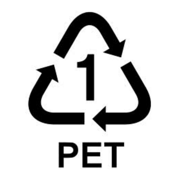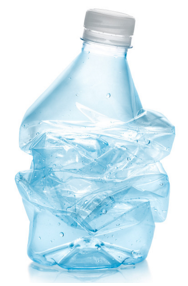News
03-11
Polyethylene terephthalate (PETE or PET) is the most commonly used thermoplastic polymer in the world and is better known in the textile industry by the trade name “polyester.” It is a naturally transparent and semi-crystalline plastic widely used as a fiber for clothing, as an effective moisture barrier with wide applicability in bottling and packaging (known in these cases as PET or “PET resin”), and as an engineering plastic when it is combined with other materials like glass fiber or carbon nanotubes to significantly increase the material’s strength. It is a naturally colorless, semi-crystalline material. Some of its most important characteristics include its resistance to water, its high strength to weight ratio, the fact that it is virtually shatterproof (it won’t break like glass packaging), and its wide availability as an economic and recyclable plastic (resin identification code “1”).
PET was first polymerized in the 1940s by DuPont chemists looking to develop polymer materials for use as textile fibers. It is produced from the synthesis of ethylene glycol and terephthalic acid. Even without additives to increase its strength, PET is still very strong for its light weight. This means that less material is required for uses such as plastic film for packaging. This means less fuel is required for shipping when using PET packaging. Additionally, although the material is petroleum based, approximately 40% of the energy is stored internal and is available a second time once recycled. According to PETresin.org, “life cycle studies of PET have consistently shown it to be a highly sustainable material with a positive environmental profile.”
According to some reports, the current global demand for the material generates an annual market of about 56 million metric tons. The major end users of polypropylene are the textile industry, which (according to Wikipedia) consumes about 60% of the total. Other major uses include the bottling and packaging industry which accounts for roughly 30%.
Some of the most significant properties of Polyethylene terephthalate (PETE or PET) are:
Chemical Resistance: PET does not react with water or food which is one of the reasons it is used for consumable packaging.
Strength to Weight Ratio: PET is very strong for its lightweight.
Shatterproof: PET will not break or fracture. This makes it a great replacement for glass as a container.
Transmissivity: Polyethylene terephthalate (PETE or PET) is naturally transparent. That said, if high transmissivity is desired then plastics like Acrylic or Polycarbonate may be better choices.
Polyethylene terephthalate is generally “thermoplastic” (as opposed to “thermoset”) material which has to do with the way the plastic responds to heat. That said, some variants of the material (such as certain types of polyester) are thermoset. Thermoplastic materials become liquid at their melting point (roughly 260 degrees Celsius in the case of PET). A major useful attribute about thermoplastics is that they can be heated to their melting point, cooled, and reheated again without significant degradation. Instead of burning, thermoplastics like polypropylene liquefy, which allows them to be easily injection molded and then subsequently recycled. By contrast, thermoset plastics can only be heated once (typically during the injection molding process). The first heating causes thermoset materials to set (similar to a 2-part epoxy) resulting in a chemical change that cannot be reversed. If you tried to heat a thermoset plastic to a high temperature a second time it would simply burn. This characteristic makes thermoset materials poor candidates for recycling.
PET is unique in that it is virtually shatterproof, has an extremely high strength to weight ratio and does not react to food and water. The combination of these material properties in addition to its wide availability and low price make it a nearly unbeatable solution for consumable product packaging. Polyester for fabrics is strong, flexible, and when combined with materials like cotton can reduce wrinkling, shrinking, and makes the fabric more resistant to tears.
No. PET an inert material that is widely accepted by health authorities as a safe plastic which is one of the reasons it is so commonly used in food and beverage packaging. Similar to glass it is hygienic and generally resistant to attack by bacteria and other microorganisms. It will not biologically degrade even when in direct contact with food and beverages. Special variants of take-home plastic containers made of PET are also available and commonly used for microwaveable food and it is cleared by the FDA for both single and repeated use.
Polyethylene terephthalate is readily available and relatively inexpensive.
Polyethylene terephthalate has high strength to weight ratio.
Polyethylene terephthalate (PET) is very resistant to moisture.
Polyethylene terephthalate has excellent chemical resistance to organic material and water (it is not biodegradable which is good and bad depending on your perspective and its intended use).
Polyethylene terephthalate is virtually shatterproof (it won’t break like glass packaging).
Polyethylene terephthalate is easily recycled. It can be reused by conducting a series of washing processes or broken down into its constituent raw materials which can then be turned into the original resin.
Polyethylene terephthalate is highly transparent.